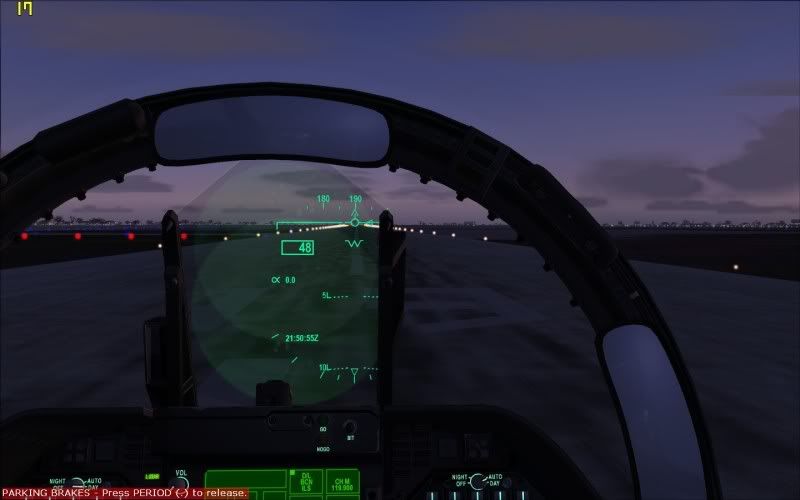Well, you may be right. But they make two significant and related claims. One, that the velocity vector behaves properly (i.e., indicates your flight path), something that no other FS plane has achieved, at least none that I have or know of. And two, that it was designed specifically for Track-IR. Another thing they point out is that real engineers designed this plane. Real engineers who ought to know what a HUD actually is…
The folks at WoP/A2A know what a HUD is. Check out the attached pics, the first two of the WoP P-40. In the first, the pilot is looking straight down the glass of the reflector gun sight (which later evolved into the HUD we know today). In the second, the pilot has moved his head to the left to “look around” the sight glass. See? The lighted sight ring is still positioned over the same point on the ground, but because I’m looking “around” the glass, I can’t see it anymore, except for a portion of the ring.
This is called “focused to infinity”, and it means the symbology remains stationary with respect to the outside world, regardless of how the pilot moves his head. This is how a HUD can contain something called a “velocity vector”, which always indicates where the plane is headed, even if the pilot moves his head around.
If the FA-18E pic here is accurate, the velocity vector will indicate your true flight path only if you have your head positioned absolutely still, and at the correct X/Y/Z location with respect to the VC model. That will be a pain for Track-IR users.
I’m hoping these teaser screen shots have been altered slightly for publicity purposes, and the HUD in the released version does in fact behave correctly. I’ll buy it for sure. In all other respects, this is an awesome plane.
The folks at WoP/A2A know what a HUD is. Check out the attached pics, the first two of the WoP P-40. In the first, the pilot is looking straight down the glass of the reflector gun sight (which later evolved into the HUD we know today). In the second, the pilot has moved his head to the left to “look around” the sight glass. See? The lighted sight ring is still positioned over the same point on the ground, but because I’m looking “around” the glass, I can’t see it anymore, except for a portion of the ring.
This is called “focused to infinity”, and it means the symbology remains stationary with respect to the outside world, regardless of how the pilot moves his head. This is how a HUD can contain something called a “velocity vector”, which always indicates where the plane is headed, even if the pilot moves his head around.
If the FA-18E pic here is accurate, the velocity vector will indicate your true flight path only if you have your head positioned absolutely still, and at the correct X/Y/Z location with respect to the VC model. That will be a pain for Track-IR users.
I’m hoping these teaser screen shots have been altered slightly for publicity purposes, and the HUD in the released version does in fact behave correctly. I’ll buy it for sure. In all other respects, this is an awesome plane.

